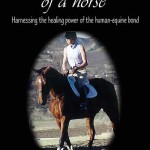
With equine therapy abounding, it has quickly become a status symbol among the country’s most prestigious treatment centers. However, while promulgating their use of horses to uncover the hidden emotions of substance abuse and dual diagnosis patients has become popular, many centers have also struggled with how best to offer this valuable treatment.
When equine therapy first emerged on the forefront, there was really no set protocol to be followed. While some centers purchased their own horses — and further advertised the availability of the horses on the grounds — others contracted out this modality through an independent provider. Further complicating the matter, some employed the use of both a licensed therapist and a horse handler, while others simply utilized the horse handler, or the psychotherapist who happened to “like” horses. However, as one can only imagine with any new, relatively unproven, modality, the outcomes were scattered and accidents happened.
And even when there was a clear method to follow, as presented by the Equine Growth and Learning Association, or EAGALA (www.eagala.org), work with horses wasn’t free of harm. To be sure, over the past five years, EAGALA reported more accidents than any other equine therapy approach. (Reports on any psychotherapeutic harm that may have occurred as a result of the inappropriate “interpretations” of untrained horse handlers are not available.) Yet perhaps due to the presentation of exercises such as “temptation alley” that correlated with what substance abuse and eating disorder patients might be experiencing, EAGALA was also the most popular method of practicing equine therapy.
Continue reading Equine Therapy: What Every Treatment Center Needs to Know, by Claire Dorotik MA